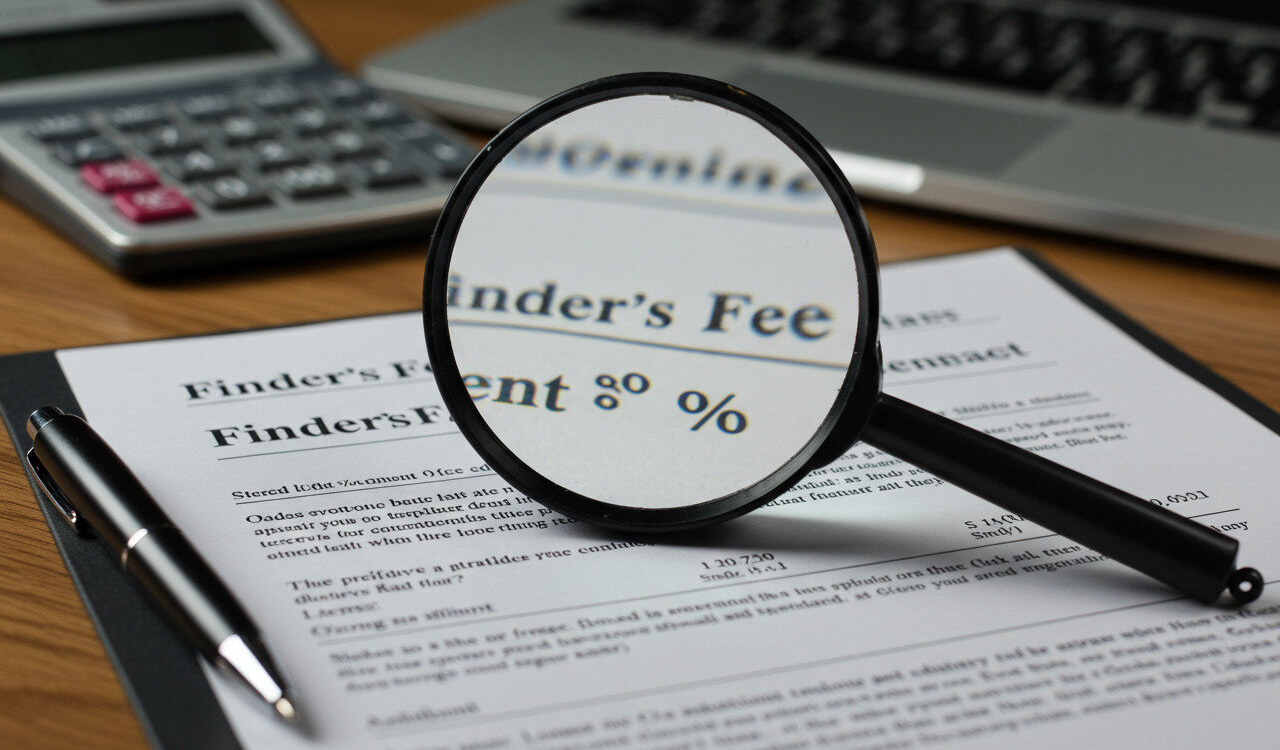How To Negotiate A Fair Finder’s Fee Agreement
- A finder’s fee, or referral fee, is paid to someone who helps complete a business deal.
- Real estate agents commonly use finder’s fee agreements to connect buyers and sellers.
- Legal compliance in the U.S. is necessary to ensure the agreement is valid.
- Clear payment terms and agreement details promote fairness and transparency.
- Discussing terms openly helps all parties reach satisfactory financial arrangements.
Introduction
The role of a finder or middleman is vital in business deals. These individuals connect two parties and facilitate mutually beneficial outcomes. A finder’s fee compensates them for these connections, often seen in real estate and business referrals. Ensuring fairness and legal validity in these agreements prevents disputes and ensures they are enforceable.
This guide provides straightforward steps, practical tools, and helpful tips to secure a fair finder’s fee agreement. Understanding the process helps avoid issues, ensuring all parties benefit.
What Is A Finder’s Fee Agreement?
A finder’s fee agreement is a contract between a person who brings new business or clients and the other parties involved in the deal. It specifies the payment the finder will receive for generating new leads or opportunities. These agreements are frequent in real estate, consulting, and business development.
A clear agreement outlines expectations, reduces misunderstandings, and saves time by keeping the terms transparent.
What Is A Finder’s Fee?
A finder’s fee, also called a referral fee, is compensation paid to someone who introduces two parties for a business transaction. The finder facilitates the connection but does not participate in negotiating or closing the deal. The fee incentivizes the finder to bring potential business opportunities that benefit everyone involved.
Finder’s fees commonly appear in recruitment, client referrals, and vendor introductions. Knowing how these fees operate helps create equitable agreements.
Common Scenarios For Finder’s Fees
Finder’s fees apply in many contexts where one person connects two others:
- Real estate agents receive fees for locating buyers for property owners.
- Business referrals reward those who help companies find new clients or suppliers.
- Networking events offer chances to earn by facilitating new business relationships.
- Informal referrals can yield rewards for introducing participants to groups or projects.
These examples illustrate the value of finders and the need for clear compensation terms.
Legal Considerations In The United States
U.S. legal frameworks safeguard both finders and clients in these agreements. Contracts must comply with state and federal regulations to be valid and enforceable.
Noncompliance risks invalid contracts and legal disputes. Adhering to laws reduces risk and builds trust between parties.
Regulations And Compliance Requirements
Compliance ensures finder’s fee agreements are lawful and defensible. Observing federal and state rules maintains fairness and protects reputations.
Regulation Aspect
| Regulation Aspect | Description |
|---|---|
| State Laws | Vary by state; contracts must meet local legal standards |
| Federal Regulations | Apply in industries like real estate and finance |
| Documentation Standards | Contracts must specify deliverables and payment terms |
| Taxation Policies | Fees are taxable income and must be reported to the IRS |
Following these rules helps avoid legal issues and protects professional standing.
When Is A Finder’s Fee Agreement Enforceable?
An enforceable agreement clearly defines services provided, payment methods, and obligations for all parties. The contract must be in writing and signed by everyone involved.
Unclear contracts lead to misunderstandings. Explicit payment terms and signatures provide legal security and clarity.
Elements Of A Fair Finder’s Fee Agreement
A fair agreement should:
- Identify the finder and their responsibilities
- Specify payment details
- Outline each party’s contributions or duties
- Ensure equitable compensation reflecting the finder’s role
Transparency minimizes disputes and fosters trust and long-term partnerships.
Determining A Reasonable Finder’s Fee Percentage
Finder’s fees typically range from 5% to 15% of the deal’s total value. The percentage depends on industry norms, deal complexity, and the finder’s involvement.
Clear upfront expectations prevent confusion and ensure payment matches the finder’s contribution.
Clauses To Include In The Agreement
Include these clauses for completeness and legal clarity:
- Payment Terms: How and when fees will be calculated and paid
- Duration: Start and end dates of the agreement
- Confidentiality: Responsibilities for maintaining privacy
- Cancellation Terms: Procedures and consequences if a party fails to fulfill obligations
- Ownership Of Referrals: Clarification on who receives payment for each introduction
These clauses set clear rules for cooperation and minimize conflict.
Conclusion
A fair finder’s fee agreement protects all parties by clarifying compensation and responsibilities. It should state the fee percentage and include necessary legal provisions. Compliance with laws adds security, while open communication and recordkeeping support lasting success. Consulting experts can provide confidence in drafting or negotiating these agreements.
Frequently Asked Questions
What Is A Typical Finder’s Fee Percentage In The U.S.?
Finder’s fees generally range from 5% to 15%, varying by industry, deal size, and the finder’s role.
Are Finder’s Fees Taxable?
Yes, finder’s fees count as taxable income and must be reported to the IRS.
Can The Terms Of A Finder’s Fee Agreement Be Negotiated?
Yes. Discussing fees, responsibilities, and legal rights upfront helps ensure mutual agreement.
What Happens If The Deal Does Not Close?
Most agreements specify payment only occurs when the transaction is completed.
Do Both Parties Need To Sign The Agreement?
Yes. Signatures are necessary for enforceability and legal protection.
Updated by Albert Fang
Source Citation References:
+ Inspo
There are no additional citations or references to note for this article at this time.
